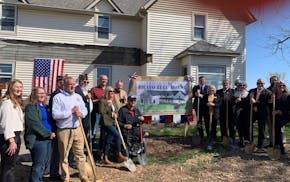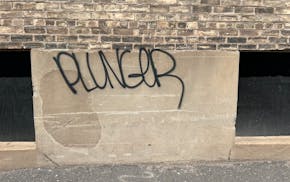With light-rail trains now up and running along University Avenue, Ramsey County and St. Paul officials are turning their attention to another long-awaited transit target: the Riverview Corridor.
The 12-mile route — which tracks W. 7th Street between downtown St. Paul, the airport and Mall of America — has been largely overlooked since 2002, when the Legislature killed a planned $44 million express busway for the corridor in a budget-balancing move.
Now the Ramsey County Regional Railroad Authority, bolstered by recent city and regional interest, is conducting a $1.45 million study of possible transit routes and vehicles for Riverview, from buses to streetcars to trains.
In coming weeks, the rail authority will launch a website and Facebook page on the corridor and begin a series of open houses to get public feedback on the alternatives.
"All the options are open. We're not coming in with a preconceived idea," said Ramsey County Commissioner Rafael Ortega, who chairs the rail authority and represents the corridor area. He added that a new transit mode in the corridor would do more for St. Paul's economic development than the Green Line on University Avenue.
"Riverview was always on the map. It was a matter of when," Ortega said.
And just as in 2002, concerns about the impact of a transitway on W. 7th Street neighborhoods and businesses run deep. Many feel that the Metro Transit buses now using W. 7th Street are sufficient.
A neighborhood meeting last week with rail authority project manager Mike Rogers drew 50 people, a strong turnout for a transit proposal that hasn't even reached the drawing board. Questions ranged from whether the transit line would need tunnels (unlikely) to where it would cross the river (to be determined).
Tim Mayasich, the rail authority's director, said that the study, expected to be finished late next year, will narrow the list of alternatives to one or two preferred options, or possibly a hybrid approach — for example, streetcars part of the way, buses the rest.
Besides W. 7th, routes being considered include Shepard Road, the Canadian Pacific (CP) Railway line and Interstate 35E. A connector route from the main line to Highland Village, via the abandoned Ford Motor Co. rail spur, is another possibility. New transit in the Riverview Corridor is still a long ways off. Even if the environmental, engineering and construction phases fall into place, it still could be 10 years before a transit line is up and running.
Geographically and historically, the corridor is a natural for transit improvements. More than 150 years ago, it was the shortest path between Fort Snelling and St. Paul's river landings; today, it's the most direct route between downtown and the airport.
In the mid-1990s, the Riverview Corridor was considered one leg of a "transit triangle" of possible light rail and busways linking both downtowns with the airport and Mall of America in Bloomington.
'It's now or never'
With that in mind, the Ramsey County rail authority released the results of a $1.15 million study in 2000 that compared seven transit options in the Riverview corridor, including three light-rail scenarios and two express busway plans. The most expensive route, it found, was along the CP line; least expensive was along W. 7th Street.
The study indicated the best option was a high-speed busway that would cost far less than light rail and have less impact on homes and businesses. The promise of state funding won backing for the busway from the St. Paul City Council (including then-Council Member Chris Coleman) and the rail authority, despite neighborhood concerns about congestion.
The Metropolitan Council then awarded $44 million to the Riverview express busway project, the first of its kind in the Twin Cities. But neighborhood pressure forced officials to ratchet back to limited-stop bus service. Then, in 2002, the Legislature stripped $40 million of the funding to help address a budget shortfall, dooming the project.
For years, Riverview took a back seat to development of the Hiawatha and Central corridors, but it was always on the shortlist for transit investment. Recently, the Met Council planned to build the metro area's second arterial bus rapid transit line there, and the City Council chose it as the first would-be route of St. Paul's proposed streetcar system.
Both projects now are on hold until the county's study is completed. The rail authority hired design and engineering firm AECOM to conduct the study, and has two consulting firms working on public outreach. The public education campaign is essential, Ortega said, to answer local concerns and fears that continue to shadow the corridor's transit prospects. Things have changed since 2002, he said; the community is more diverse, there are more housing options there, older people want better transit and fewer young people are using cars.
St. Paul City Council Member Dave Thune opposed the express busway in 2002 because it would have removed a traffic lane, reduced parking and narrowed sidewalks. But he's glad that transit options for Riverview are again being studied and said he could support either a limited-stop bus route or a streetcar line, neither of which would require their own lanes.
"We need to go ahead with the study. It's kind of now or never, to be in the funding queue," Thune said. "If this is a good idea, let's have a whack at it — provided it's nondestructive."

New sober house for veterans in southern Minnesotan wants to treat the real issue: PTSD
Two North Loop condos combined into one 'dreamy' space listed for $649,900

Minneapolis murder suspect arrested after decadelong escape
What to know about a possible Minnesota equal rights amendment on abortion rights
